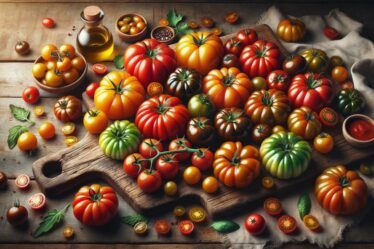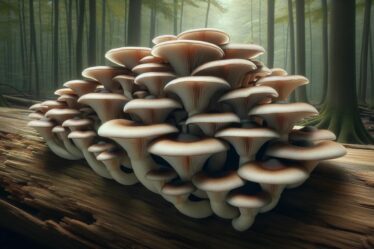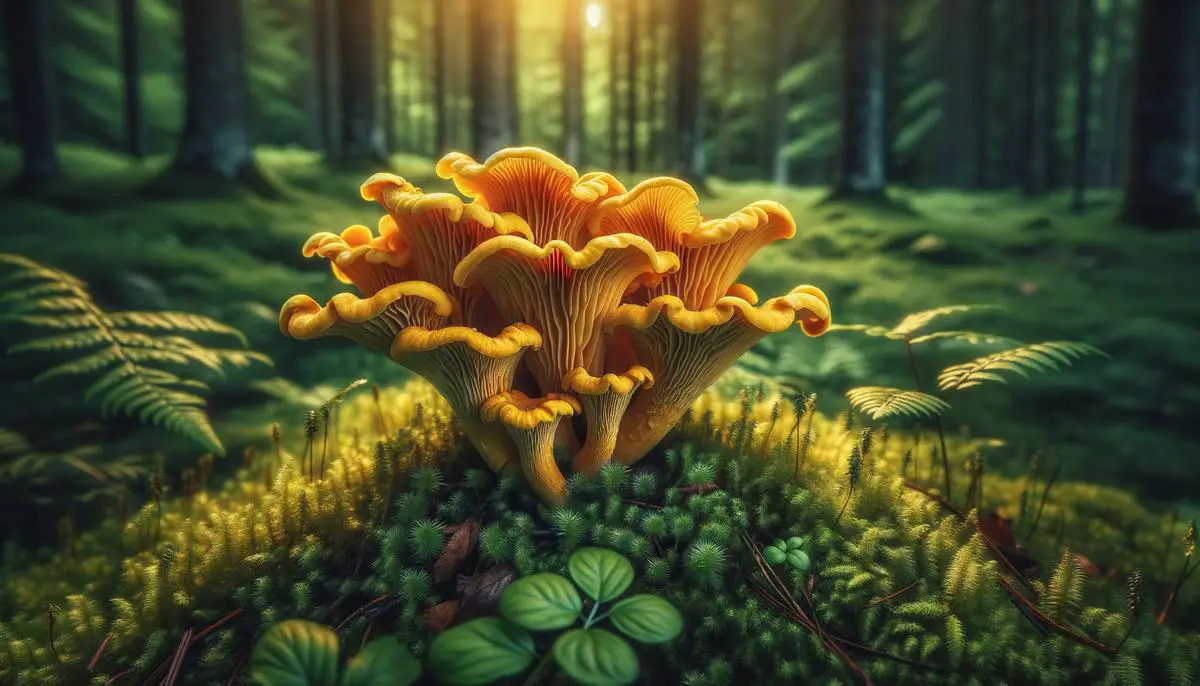
Identification & Species
Chanterelle mushrooms, with their distinctive trumpet shape and vibrant colors, catch the eye of foragers. These woodland treasures range from a pale yellow to a deep, golden orange. Key to spotting a chanterelle is noticing their unique, wavy cap which, over time, dips to form a funnel. The underside of the cap doesn't sport the usual gills of most mushrooms but shows off blunt, forked ridges that run partly down their stem. This feature is a dead giveaway when trying to tell chanterelles apart from their deceptive look-alikes.
Touching a chanterelle reveals more about its identity. Their flesh is dense and somewhat chewy, not easily crumbling under gentle pressure – a hint at their quality and freshness. Cut one open, and the inside blooms with a brilliant white, another mark of a true chanterelle. Holding it close, the mushroom exudes a mild smell reminiscent of apricots or peaches, a sweet fragrance that is almost as delightful as the mushroom is to taste.
Variety abounds in the chanterelle family. The widely known golden chanterelle, Cantharellus cibarius, is just one star in this expansive constellation. Each species takes delight in confusing the amateur forager, subtly changing colors, shapes, and even textures depending on where and when they make their appearance. The Pacific Golden Chanterelle, or Cantharellus formosus, thrives in the wet coastal forests of the Pacific Northwest. Meanwhile, its European cousin, Cantharellus cibarius, prefers the deciduous and conifer forests of both Europe and North America.
Foraging chanterelles is akin to a treasure hunt. They sprout from the rich earth, especially favoring mossy, old-growth forests that cloak the ground in a moist veil perfect for mushroom growth. The appearance of chanterelles can be almost magical, manifesting after summer rains grace the landscapes of eastern North America or waiting for fall's touch in the drier climates of the west. Seeking these mushrooms requires patience and sharp eyes, scouting near hardwoods like oaks, birch, and beeches where these fungi form beneficial relationships with the trees, exchanging nutrients in a silent partnership.
Yet, not all that glitters in the forest is gold. The hunt for chanterelles comes with cautionary tales of misidentification. The menacingly named Jack O'Lantern mushroom can be a dreadful doppelganger to the untrained eye. Unlike chanterelles, these tricksters emerge in clusters from wood, brandishing true gills that glow ominously in the dark. The False Chanterelle mimics our sought-after prize even more closely, but upon closer inspection reveals itself by its thinner and densely packed gills.
Identifying Cantharellus requires understanding these subtle dififferences—architecture, habitat, color, and companion flora. Equipped with this knowledge, avid foragers can step into the forests with confidence, ready to distinguish the edible treasures from their toxic twins.
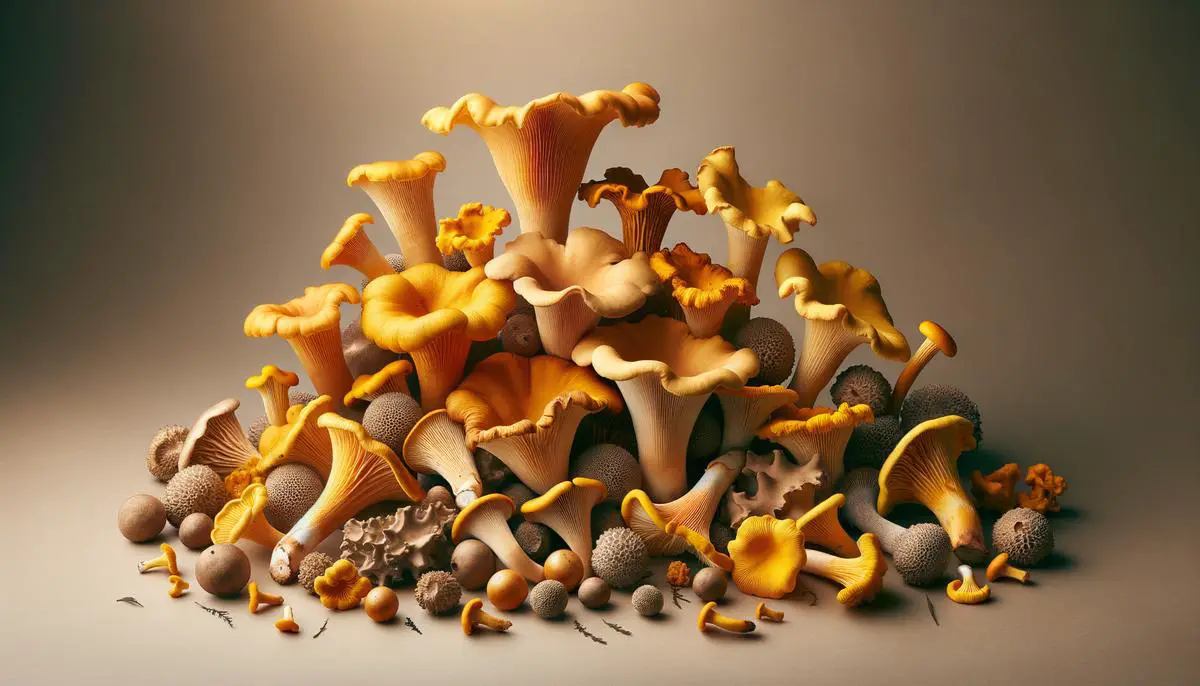
Foraging Tips
Nurturing a respectful relationship with nature while foraging for chanterelles ensures the forest continues to flourish and generously share its bounty. As you tread softly under the canopy of ancient trees, remember that you're a guest in a complex ecological web, a fact that brings with it responsibilities and considerations.
Chanterelles typically begin their shy emergence from mid-summer through the early fall, although this can vary widely depending on your local climate. Early morning ventures, following a night of gentle rainfall, can often be the most rewarding. These conditions awaken the silent mycelium beneath your feet, encouraging the fruiting bodies we so diligently seek to peek through the leaf litter.
Venturing into places where these mushrooms live in harmony with hardwoods or pine trees, seek signs of their presence—survey areas with moist soil, rich in organic material, and dappled sunlight. Chanterelles favor these nurturing environments, thriving in the tender embrace of nature's undisturbed corners. Always be mindful to forage in legally permissible areas and understand national or local guidelines that govern the collection of wild mushrooms.
Upon discovering a trove of chanterelles, the moment of harvest is critical to ensuring the well-being of future populations. Employing a knife, cut the stem above the ground level rather than pulling them out. This technique not only preserves the underground network, or mycelium but also means your bounty is cleaner and ready for the basket. Speaking of baskets, opt for one made of wicker or a similar material. This lets spores fall back to the forest floor as you walk, sowing the seeds for future growth and contributing to the cycle of life in these woods.
Embrace a principle of moderation—gather only what you need, usually said to be about a third of what you encounter. This mindful practice leaves enough behind for wildlife, other foragers, and to ensure the continuance of the mushroom in its natural habitat. Chanterelles, like all creatures in the forest, play a role in their ecosystem. They are not only a forager's prize but integral to the woodland's health and vitality.
Lastly, remember not to compress or disturb the soil too much around mushroom sites. The mycelium from which these mushrooms spring is an intricate, fragile network—a veritable underground communication system that sustains the forest. By stepping lightly and harvesting wisely, we ensure that our forests remain vibrant and fruitful for generations of foragers to come.
By adhering to these thoughtful foraging practices, we maintain a beautiful balance between taking from nature and giving back. It's this harmony that allows the enchanting world of chanterelles to flourish, continuing to fill our baskets (and our hearts) with Nature's blessings, one careful step at a time.
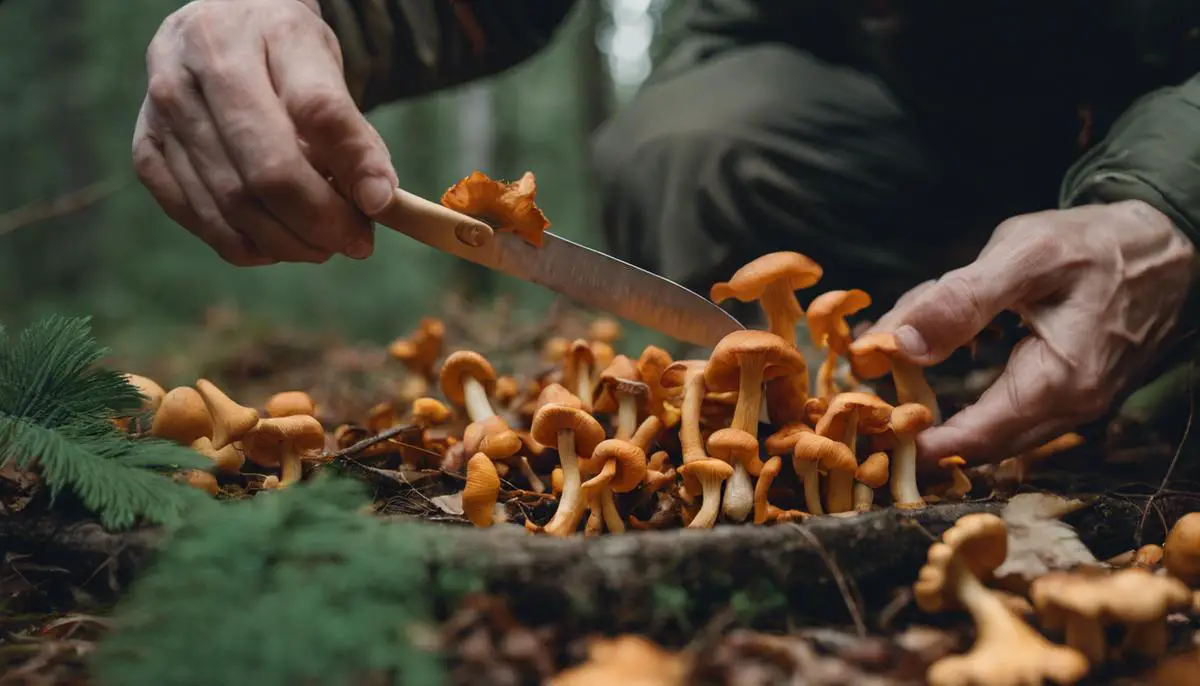
Culinary Uses
Stepping beyond the forest and into the kitchen, this crown jewel among mushrooms transforms from a forager's treasure into a culinary delight. Chanterelles, with their rich color and nuanced flavors reminiscent of fruits and the forest floor, have long graced tables with their presence, illuminating dishes with their unmistakable vibrancy. Their versatility in cooking is unmatched, lending themselves to an array of savory creations that tease the palate with delicate, earthy undertones and a peppery finish.
Simple preparations often best celebrate the complex flavors of chanterelles. Sautéing these mushrooms gently in a modest amount of butter or olive oil unveils their nuanced fragrance and taste, making for an excellent accompaniment to eggs or a savory topper for crusty bread. Garlic, thyme, and parsley complement their flavor without overshadowing it, allowing for a harmonious blend of tastes that echoes the gentleness of early autumn.
For more elaborate culinary endeavors, chanterelles make an exceptional cornerstone for risottos and pastas. Their texture and flavor infuse these dishes with depth, elevating them from mere meals to memorable feasts. Each spoonful of risotto, creamy and perfumed with the essence of these golden fungi, is a testament to the richness of nature's larder. In soups or stews, chanterelles contribute a layer of complexity that can transform the simple into the sublime, developing a rich base that pairs splendidly with meats or stands confidently on its own.
To prepare chanterelles for cooking, first brush off any dirt with a soft brush or a damp cloth; rinsing them in water can make them soggy as they readily absorb moisture. If necessary, trimming the ends of the stems ensures that only the most tender parts are used, promising a delectable bite every time.
Storing chanterelles, however, requires careful consideration. If not intended for immediate use, they can be stored briefly in the refrigerator, preferably in a paper bag to maintain adequate ventilation. For long-term preservation, chanterelles respond beautifully to drying or freezing methods. Dried chanterelles reconstitute in soups and risottos with a burst of flavor and a pleasant chewy texture. Alternatively, sautéing and then freezing them allows you to lock in their lovely aroma and taste for future culinary explorations.
Chanterelle mushrooms encapsulate the art of foraging and the joy of cooking, coaxing us forward on a journey through the wilderness into the heart of our kitchens. With every dish adorned with these golden gems, we celebrate not merely a meal but an edible echo of the forest—delightful and wonderfully distinctive. Whichever method you choose to bring chanterelles into your culinary creations, let their natural character guide your hands and your tastes. These woodland wonders are more than ingredients; they are invitations to adventure, to create, and most importantly, to savor.

Health Benefits
Among the myriad reasons to celebrate the chanterelle mushroom, their remarkable nutritional profile stands as a testament to their hidden powers, encapsulated beneath their golden exterior. These forest dwellers are not only a feast for the senses but embody health benefits that extend beyond their immediate gustatory pleasure.
Rich in vitamins and minerals, chanterelles serve as a significant source of vitamin D, a rarity among edible fungi, providing sustenance through the darker months when sunlight, our natural source of vitamin D, is scarce. This essential nutrient plays a crucial role in bone health and supports the immune system, making chanterelles an especially valuable addition to the autumn and winter table.
These woodland treasures are abundant in B vitamins, particularly B5 (pantothenic acid) and B7 (biotin), contributing to energy metabolism, skin health, and the proper function of the nervous system. The presence of minerals such as copper, potassium, and selenium fortifies their standing in the dietary kingdom. Copper aids in forming red blood cells and maintaining healthy bones and nerves, while potassium supports heart function and muscle contractions. Selenium, an antioxidant, works to combat cellular damage by neutralizing harmful free radicals, guarding the body against aging and chronic diseases.1
In the realm of anti-inflammatory goodness, chanterelles are outstanding. Their consumption can influence the body's inflammatory responses, potentially reducing inflammation-related discomforts and conditions. This attribute, linked to compounds such as ergothioneine and beta-glucans found in these mushrooms, gives them health-protective qualities that scientists are just beginning to fully understand.2
Chanterelles also manifest unique properties that bolster our immune systems. Through complex carbohydrates, such as beta-glucans, these fungi stimulate our body's defense mechanisms, enhancing our ability to ward off illness and infection. This functional food's ability to act as an immune modulator can be particularly beneficial in weathering seasonal changes when our bodies are more susceptible to external stressors.
For those exploring ways to incorporate more plant-based nutrients into their diets without compromising on flavor or satisfaction, chanterelles offer an excellent option. They provide a rare blend of sensory delight and nutritional potency, an embodiment of the principle that food can be both delicious and nourishing. Their low calorie and fat content make them an ideal choice for anyone conscious about maintaining a balanced diet without sacrificing the joy of eating.
The consummate marriage between flavor and health found in chanterelle mushrooms offers a persuasive argument for embracing these gifts of the forest. With each savory bite, we're reminded that nature's bounty provides not only for our immediate pleasures but also for our enduring well-being. In this regard, chanterelles are more than a seasonal delicacy; they are a testament to the healing power of natural foods. As we delve further into the considerations of what it means to eat well, chanterelles stand out as a poignant reminder of the richness that a mindful, balanced diet can offer – a richness that nurtures both body and soul in equal measure.
Chanterelle mushrooms remind us that nature's gifts are abundant and waiting to be appreciated, offering flavors and experiences that are as enriching as they are delicious. Through mindful foraging and cooking, we engage in an age-old dialogue between human and habitat, discovering the profound joy and nourishment that comes from such a connection.
- Valentão P, Andrade PB, Rangel J, et al. Effect of the conservation procedure on the contents of phenolic compounds and organic acids in chanterelle (Cantharellus cibarius) mushroom. J Agric Food Chem. 2005;53(12):4925-4931.
- Muszyńska B, Kała K, Sułkowska-Ziaja K, Krakowska A, Opoka W. Agaricus bisporus and its in vitro culture as a source of indole compounds released into artificial digestive juices. Food Chem. 2017;214:22-28.

